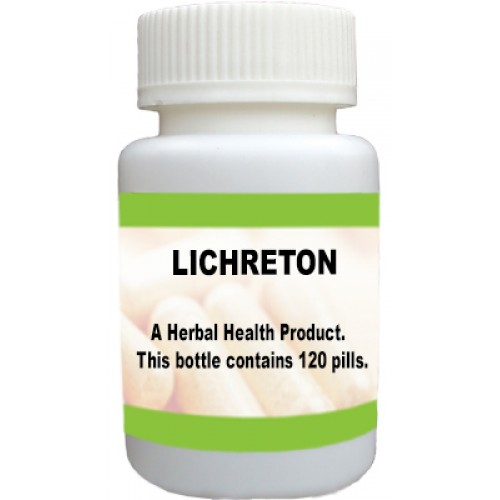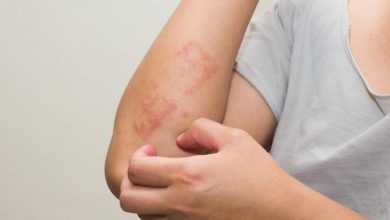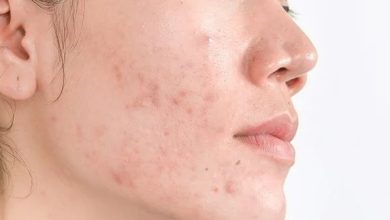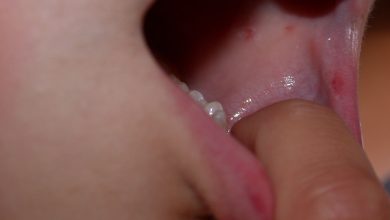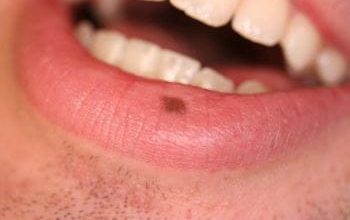Clear Your Skin Effective Ways to Treat Lichen Planus on Face
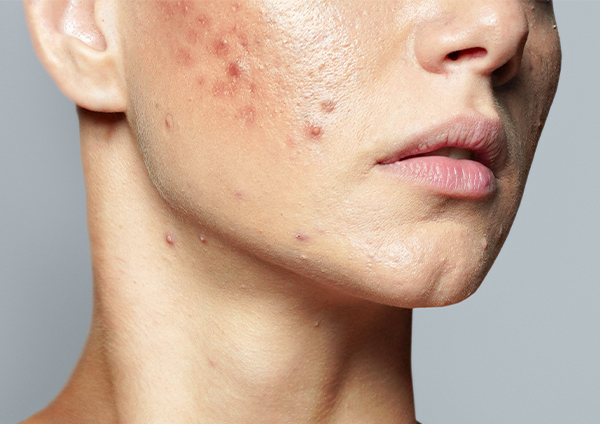
Lichen planus on face can be an uncomfortable and embarrassing condition. It causes painful, itchy, and discolored patches of skin that can be difficult to treat. If you are struggling with lichen planus on face, you may be looking for ways to get rid of it quickly and effectively. Some of the best treatments for lichen planus on face, so you can clear your skin and regain your confidence.
What is Lichen Planus on Face
Lichen Planus on Face is a skin condition that can be quite bothersome. It is a chronic inflammatory disorder that causes red, itchy, and sometimes painful patches on the skin. These patches can appear anywhere on the face, including the cheeks, forehead, nose, and chin.
Lichen Planus on Face is characterized by its distinct appearance. The affected skin may have a shiny or scaly texture, and it often develops small, flat bumps that can sometimes merge together to form larger patches. In some cases, these patches may have a purplish hue.
The exact cause of Lichen Planus on Face is still unknown, but it is believed to be an autoimmune condition. This means that the body’s immune system mistakenly attacks healthy skin cells, leading to inflammation and the characteristic symptoms of lichen planus.
Certain risk factors may increase the likelihood of developing Lichen Planus on Face. These include having a family history of the condition, having other autoimmune disorders, and being exposed to certain medications or chemicals.
If you suspect that you may have lichen planus on your face, it is important to consult with a dermatologist for a proper diagnosis. They can examine your skin and may recommend a skin biopsy to confirm the diagnosis.
In the next section, we will explore the common symptoms of Lichen Planus on Face, so you can better identify if you are dealing with this condition.
Common Symptoms of Lichen Planus on Face
Lichen Planus on Face can present a range of symptoms that can vary from person to person. If you suspect you may have lichen planus on your face, it’s important to be aware of the common symptoms associated with this condition.
One of the most noticeable symptoms is the presence of red, itchy, and sometimes painful patches on the skin. These patches can appear anywhere on the face, including the cheeks, forehead, nose, and chin. The affected skin may also have a shiny or scaly texture, making it stand out even more.
In addition to the redness and itchiness, Lichen Planus on Face can also lead to the development of small, flat bumps that may merge together to form larger patches. These patches may have a purplish hue, making them even more noticeable and potentially embarrassing.
It’s important to note that everyone’s experience with Lichen Planus on Face may be different, and not all symptoms may be present in every case. Some individuals may only experience mild itching and redness, while others may have more severe symptoms. Consulting with a dermatologist for a proper diagnosis is essential in order to receive appropriate treatment.
Next, we will explore the causes and risk factors associated with Lichen Planus on Face.
Causes and Risk Factors for Lichen Planus on Face
Lichen Planus on Face is a complex condition, and while the exact cause is still unknown, there are several factors that can contribute to its development. One potential cause is an overactive immune system. It is believed that the immune system mistakenly attacks the skin cells on the face, leading to inflammation and the characteristic symptoms of lichen planus.
Additionally, certain risk factors can increase the likelihood of developing Lichen Planus on Face. Having a family history of the condition can put you at a higher risk, as genetics can play a role in its development. Other autoimmune disorders, such as lupus or rheumatoid arthritis, can also increase the risk of developing Lichen Planus on Face.
Exposure to certain medications or chemicals can also trigger the onset of lichen planus. For example, certain blood pressure medications, nonsteroidal anti-inflammatory drugs (NSAIDs), and even certain dyes and fragrances have been linked to lichen planus flare-ups.
Understanding the potential causes and risk factors for Lichen Planus on Face can help you take proactive steps to manage and prevent its occurrence. By addressing these factors, you can effectively minimize the impact of this condition on your skin and regain your confidence.
Diagnosing Lichen Planus on Face
If you suspect that you may have lichen planus on your face, it is crucial to seek a proper diagnosis from a dermatologist. While the symptoms of Lichen Planus on Face can be quite distinctive, a professional examination is necessary to confirm the condition. Your dermatologist will closely inspect your skin and may even recommend a skin biopsy to provide a definitive diagnosis. During a skin biopsy, a small sample of the affected skin will be taken and examined under a microscope to look for characteristic features of lichen planus.
Receiving an accurate diagnosis is crucial for developing an effective treatment plan. Lichen Planus on Face can be mistaken for other skin conditions, such as eczema or psoriasis, so it is important to consult with a dermatologist who specializes in skin disorders. By understanding the specific cause of your skin condition, your dermatologist can tailor a treatment plan that best suits your needs.
Don’t hesitate to reach out to a healthcare professional to get the answers you need and to find the right path towards healing your skin.
Topical Treatments for Lichen Planus on Face
When it comes to treating Lichen Planus on Face, topical treatments can be highly effective in reducing symptoms and promoting healing. There are several options available that can help alleviate the discomfort and restore the appearance of your skin.
One commonly prescribed topical treatment is corticosteroids, which work by reducing inflammation and suppressing the immune response. Corticosteroids can help reduce redness, itchiness, and the formation of bumps, providing much-needed relief.
Another option is calcineurin inhibitors, such as tacrolimus or pimecrolimus. These medications work by suppressing the immune system locally and can be particularly helpful for sensitive areas like the face. They are typically used as a second-line treatment option if corticosteroids are not effective or if there are concerns about their long-term use.
Other topical treatments that may be prescribed include retinoids, which can help regulate cell turnover and reduce inflammation, and antihistamines, which can help relieve itching and discomfort.
It is important to follow your dermatologist’s instructions when using these topical treatments, as they may come with specific application guidelines and potential side effects. With proper and consistent use, topical treatments can help you effectively manage lichen planus on your face and restore your skin to its healthy state.
Managing Stress to Alleviate Lichen Planus on Face
Managing stress is a crucial aspect of alleviating Lichen Planus on Face. While stress may not directly cause lichen planus, it can exacerbate the symptoms and make the condition more difficult to manage. Stress can weaken the immune system and trigger inflammation, which can worsen the redness, itchiness, and discomfort associated with lichen planus.
To effectively manage stress and reduce its impact on lichen planus, incorporating stress-reducing techniques into your daily routine is essential. Engaging in activities such as yoga, meditation, deep breathing exercises, or mindfulness can help calm the mind and relax the body. Finding a creative outlet or engaging in hobbies that bring you joy can also be beneficial in reducing stress levels.
Additionally, prioritizing self-care is crucial. Getting enough sleep, maintaining a healthy diet, and engaging in regular exercise can all contribute to reducing stress levels. It is also important to establish boundaries and make time for relaxation and self-reflection.
By effectively managing stress, you can create a more supportive environment for healing your skin and managing Lichen Planus on Face. Remember to prioritize your well-being and seek support if needed to navigate the challenges of managing stress in your daily life.
Natural Remedies for Treating Lichen Planus on Face
When it comes to treating Lichen Planus on Face, natural remedies can offer a gentle and holistic approach to healing. While these remedies may not be a substitute for medical treatment, they can be used in conjunction with prescribed medications to help alleviate symptoms and promote skin health.
One natural remedy that can be effective is aloe vera gel. Known for its soothing and anti-inflammatory properties, applying aloe vera gel directly to the affected areas can help reduce redness, itching, and inflammation. It can also promote healing and restore the skin’s natural moisture balance.
Another natural remedy to consider is chamomile tea. Applying a cooled chamomile tea compress to the affected areas can provide relief from itching and help soothe the skin.
Additionally, incorporating a healthy diet rich in antioxidants can support the body’s healing process. Foods such as berries, leafy greens, and turmeric can help reduce inflammation and boost immune function.
Remember to consult with your dermatologist before trying any natural remedies, as they can provide guidance on their safety and effectiveness. By exploring natural remedies in combination with medical treatments, you can take a holistic approach to treating Lichen Planus on Face and achieve the best possible results.
Diet and Lifestyle Changes to Manage Lichen Planus on Face
Making certain diet and lifestyle changes can play a significant role in managing Lichen Planus on Face. While these changes may not completely eliminate the condition, they can help reduce inflammation, boost immune function, and improve overall skin health.
First and foremost, maintaining a balanced and nutritious diet is crucial. Focus on incorporating foods rich in antioxidants, such as fruits, vegetables, whole grains, and lean proteins. These foods can help reduce inflammation and support the body’s natural healing processes. Additionally, consider including foods that are rich in omega-3 fatty acids, such as salmon, flaxseeds, and walnuts, as they have anti-inflammatory properties.
In terms of lifestyle changes, stress management is key. Chronic stress can worsen symptoms of Lichen Planus on Face, so finding effective stress-reducing techniques is essential. Engaging in regular exercise, practicing relaxation techniques like yoga or meditation, and prioritizing self-care can all help alleviate stress and promote overall well-being.
Finally, be mindful of any potential triggers or irritants that may exacerbate lichen planus symptoms. Avoiding harsh skincare products, minimizing exposure to environmental toxins, and protecting your skin from excessive sun exposure can all help prevent flare-ups.
By making these diet and lifestyle changes, you can effectively manage Lichen Planus on Face and support your skin’s healing process. Remember, it’s always a good idea to consult with your dermatologist before making any significant changes to your diet or lifestyle.
Tips for Preventing Lichen Planus on Face
Preventing Lichen Planus on Face is a proactive approach to maintaining healthy skin and minimizing flare-ups. While there is no guaranteed way to prevent lichen planus, there are certain steps you can take to reduce the risk and manage the condition effectively.
First and foremost, it is important to prioritize skin care. Keep your face clean by gently washing it with a mild cleanser and lukewarm water. Avoid harsh soaps or cleansers that may irritate your skin and potentially trigger lichen planus. Moisturize regularly to keep your skin hydrated and prevent dryness, which can exacerbate symptoms.
Additionally, protect your face from excessive sun exposure by using a broad-spectrum sunscreen with at least SPF 30. Wear a wide-brimmed hat and seek shade whenever possible, especially during peak sun hours.
Pay attention to potential triggers that may worsen lichen planus symptoms. Some common triggers include certain medications, chemicals, and allergens. If you notice that certain products or substances irritate your skin, avoid using them and opt for gentler alternatives.
Lastly, prioritize overall health and well-being. Maintain a balanced diet, exercise regularly, and manage stress effectively. A healthy lifestyle can support immune function and help minimize inflammation.
By implementing these preventive measures, you can take control of your skin health and reduce the risk of Lichen Planus on Face. Remember, consulting with a dermatologist is essential for personalized advice and guidance.

